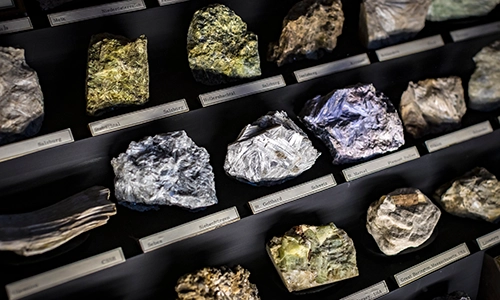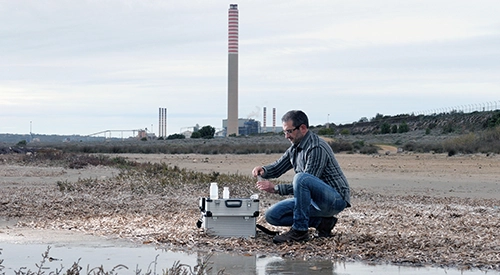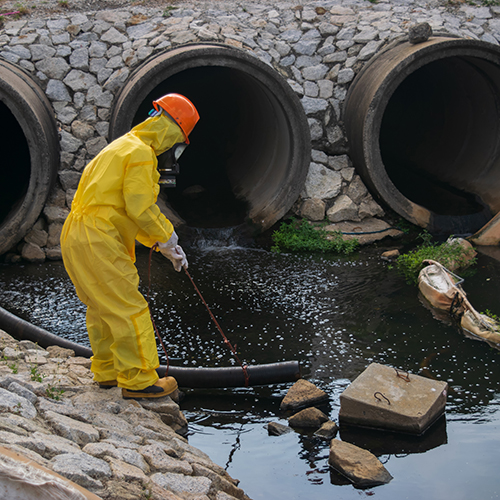Your Trusted Partner For Metals And Trace Metals Testing, Analysis, And Compliance
Pace® provides laboratory services to identify, characterize, and quantify metals and trace metals in air, soil, water, sediments, and tissues. The largest American-owned lab, Pace® understands the challenges posed by metals and trace metals contamination. Using state-of-the-art laboratory equipment and industry-approved methodologies, our accurate and reliable analysis for metals and trace metals helps our customers adhere to environmental standards and industry regulations. Choose Pace® for all your metals and trace metals testing needs and experience our commitment to quality, precision, and service.

What are metals?
More than three-quarters of all natural elements are metals. Metals are usually shiny, have good conductivity, and can be reshaped and drawn out. When exposed to air or seawater, most metals corrode and release electrons. Popular metals include gold, silver, lead, zinc, chromium, cadmium, and mercury. Other lesser-known metals include beryllium, sodium, and lithium.
What Is The Difference Between Heavy Metals And Trace Metals?
Heavy Metals
There is no universal definition of heavy metals or trace metals. However, heavy metals are usually characterized by their relatively high atomic mass and density. Exposure to many of these metals can also damage DNA, proteins, and lipids, and they are therefore of concern to environmental and human health. These metals naturally occur in the Earth’s crust, usually in low concentrations. Examples include mercury, lead, and cadmium.
Trace Metals
When the term trace metal is used, people are often referring to metals, such as copper, zinc, and iron, that are essential in small amounts for health in living organisms. There is some overlap between heavy metals and trace metals. For instance, copper is a heavy metal but also a trace metal essential to bone and heart health. Despite their necessity for organic life, some trace metals can also become toxic or even carcinogenic if present in larger amounts.
How Can You Be Exposed To Metals?
People can be exposed to metals and trace metals from many sources, such as exposure at the workplace, metal contaminants in air or water, medicines, improperly coated food containers, and lead-based paints. Scientists and legislators have worked together to set concentration levels above which a metal becomes a health concern.

Techniques For Metal Detection
ICP fully decomposes a sample into its constituent elements and transforms them into ions. Commonly used for trace element analysis, ICP offers a wide dynamic range and can detect elements at a level of parts per trillion (ppt).
ICP-AES has become the most common emission spectrometric technique and is used to determine the concentration of specific elements in a sample. It can quantify the mass percentage of the metals in metal/polymer nanocomposites.
After the sample has gone through the ICP, the mass spectrometer (MS) separates the ions by their mass-to-charge ratio, and the detector counts the number of selected ions per second. This allows the instrument to determine the concentration of each selected element.
Ion chromatography separates ions and polar molecules based on their attraction to the ion exchanger. This technique works on almost any charged molecule, including large proteins, small nucleotides, and amino acids. The cation-exchange ion chromatography is a main method for determining metal ions.
Using a manual cold-vapor technique, aqueous samples are digested with sulfuric acid, nitric acid, potassium permanganate, and potassium persulfate to oxidize the organo-mercury compounds to the mercuric ion.
How Are Metals Regulated?
Metals and trace metals are covered by a wide range of state and federal regulations to protect human health and natural resources. Many of the primary programs are covered below.

Enacted in 1976, RCRA governs the disposal of solid and hazardous waste. RCRA requirements focus on eight heavy metals that are extremely toxic at low levels. These metals are commonly referred to as the RCRA 8 and include Arsenic (As), Barium (Ba), Cadmium (Cd), Chromium (Cr), Lead (Pb), Mercury (Hg), Selenium (Se), and Silver (Ag).
The SDWA also gives U.S. Environmental Protection Agency (EPA) the authority to set National Primary Drinking Water Regulations (NPDWR) and enforce limits on contaminants in drinking water. The chemical contaminants rules regulate over 65 contaminants, including metals such as lead, copper, selenium, barium, and mercury.
The CWA sets federal surface water standards and makes discharging pollutants into the Waters of the United States unlawful without an EPA permit. Surface water, the receiving water for discharged wastewater, is monitored to ensure it does not contain contaminants higher than CWA standards. Federal law requires a review of water quality standards every three years. State laws may require more frequent reviews. The CWA also regulates how dredged or fill material may be deposited into lakes, wetlands, streams, rivers, and estuaries. Part 503 sets regulatory limits for certain metals.
NPDES was established in 1972 by the CWA to regulate the release of pollutants into The Waters of the U.S. This permitting program covers point source emissions of metals, including those from industries and wastewater treatment plants. Permits issued under the NPDES system help to identify and control these discharges. Any discharge into a water body without a permit is illegal.
CERCLA, sometimes referred to as Superfund, is designed to remedy threats from unexpected releases and historical mistakes in hazardous waste management. CERCLA regulates the cleanup of abandoned hazardous-waste sites as well as accidents, spills, and other emergency releases of contaminants, including metals, into the environment.
California’s Prop 65 right-to-know law informs individuals of potential exposure through products that contain one or more of over 900 chemicals, including metals that may carry health risks.
Select Pace® For Your Metals Testing Needs
Metals testing requires an experienced team trained to use highly selective technology and analyze the results. Pace® is at the forefront of metals testing and can handle your unique metal testing and analysis requirements. Our highly skilled scientific staff uses the latest instrumentation and specializes in identifying and characterizing metals and trace metals in air, soil, water, biosolids, sediments, and tissues.
Additional Resources
Need to find a lab that can handle your unique requirements?
Contact us directly or download our list of environmental certifications across our network.